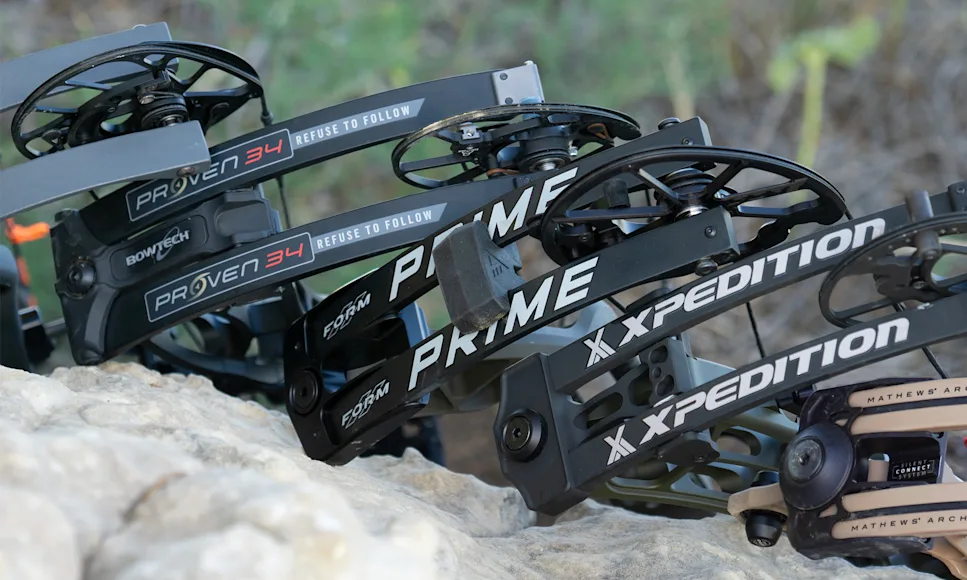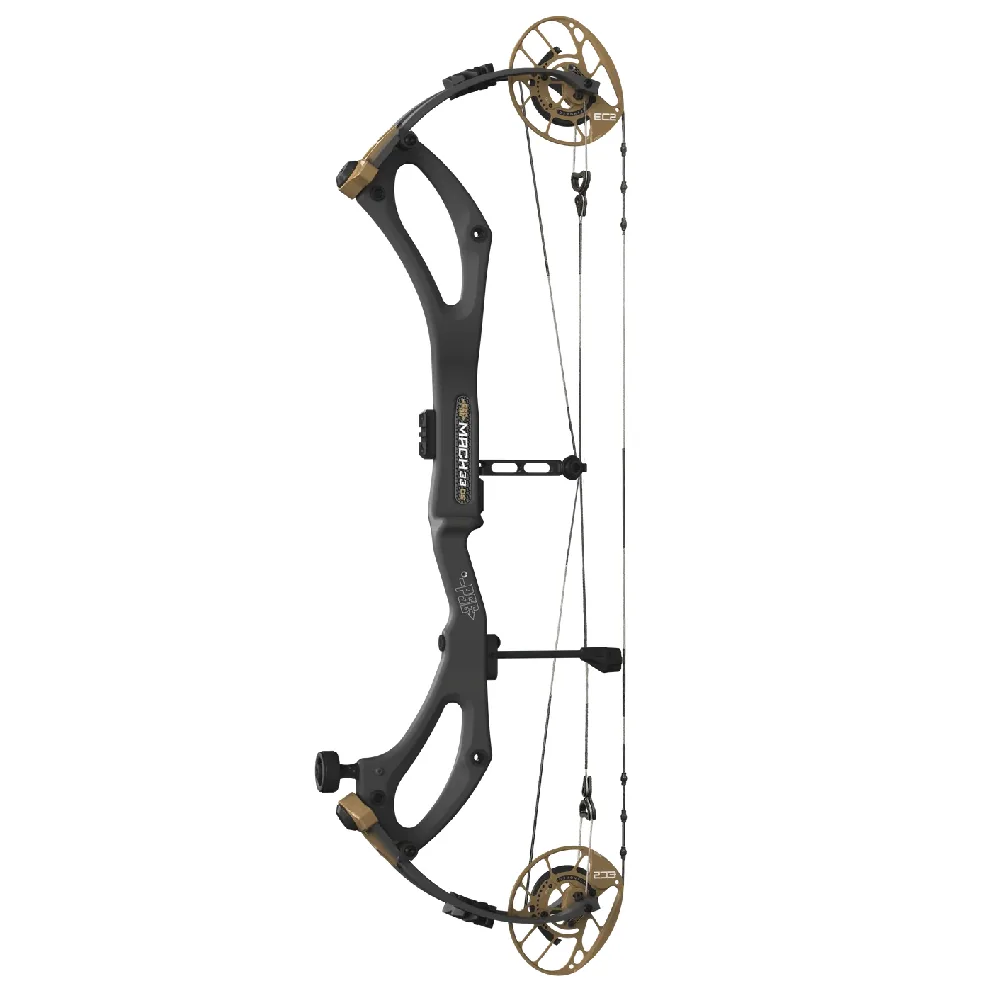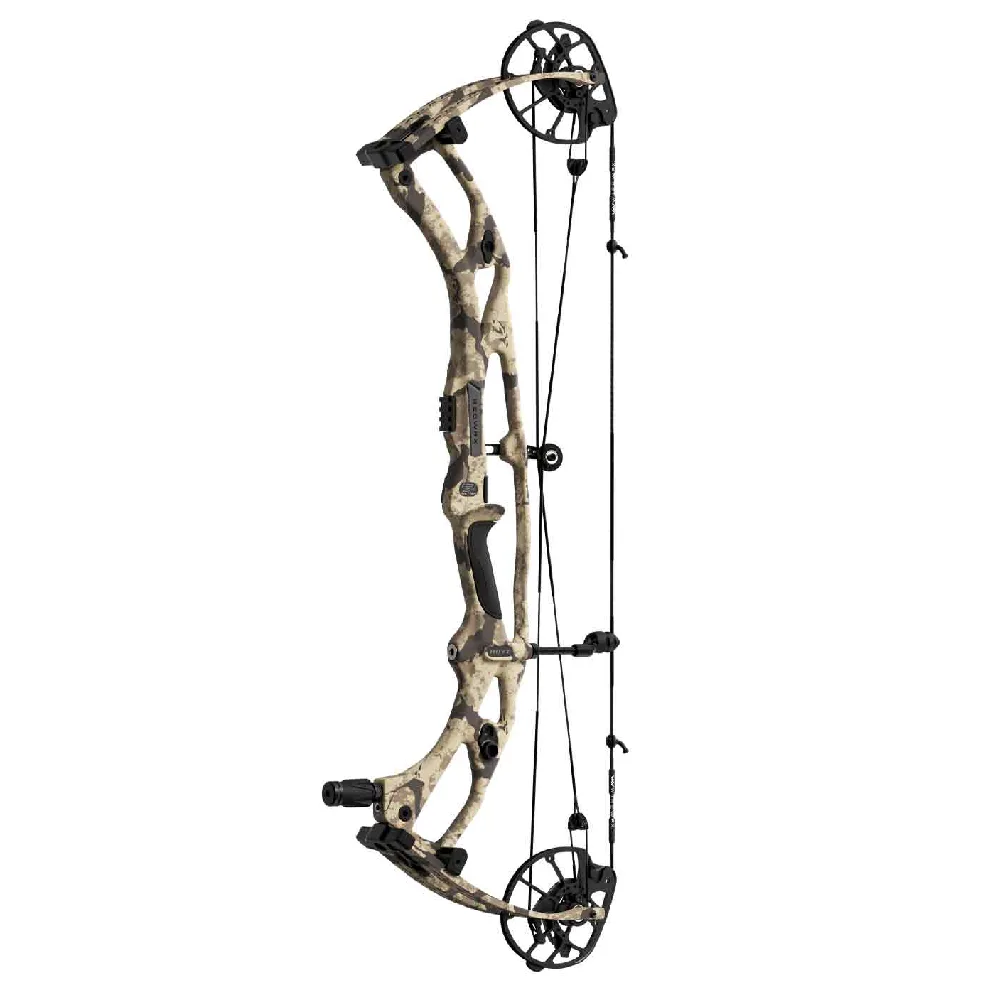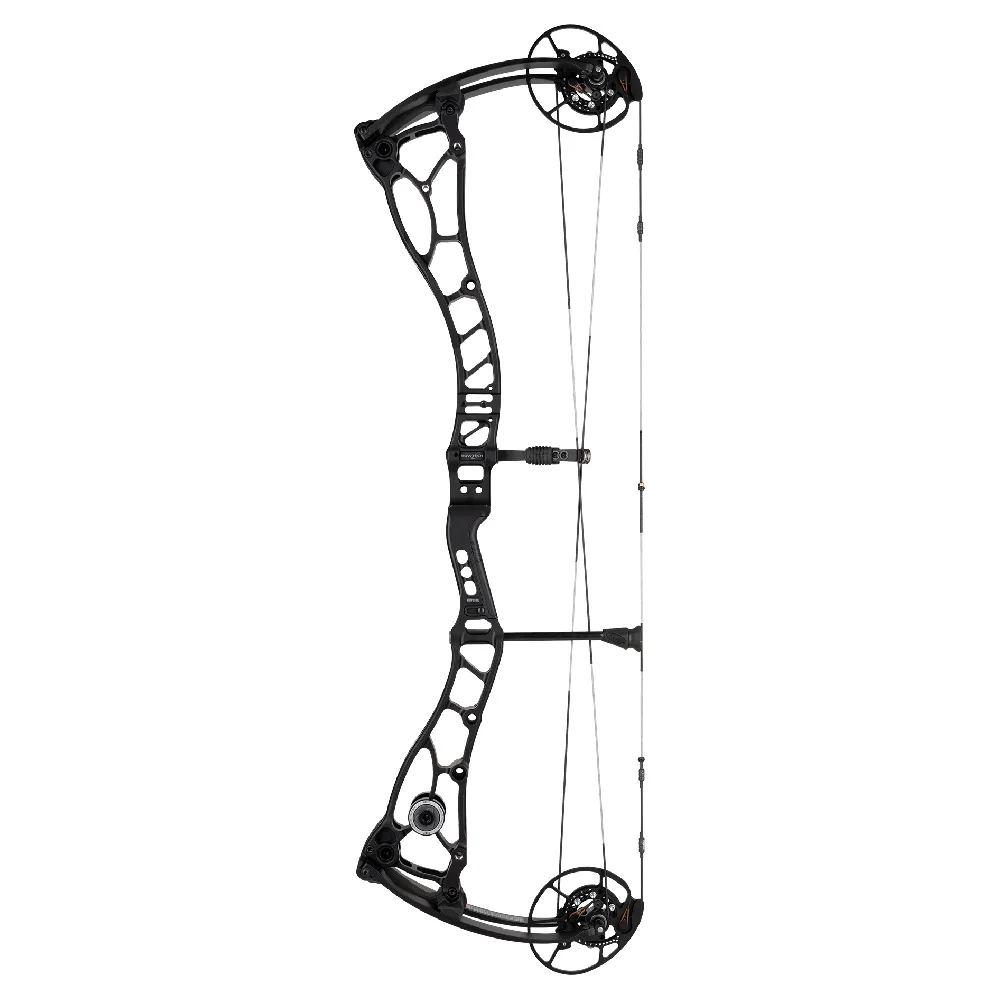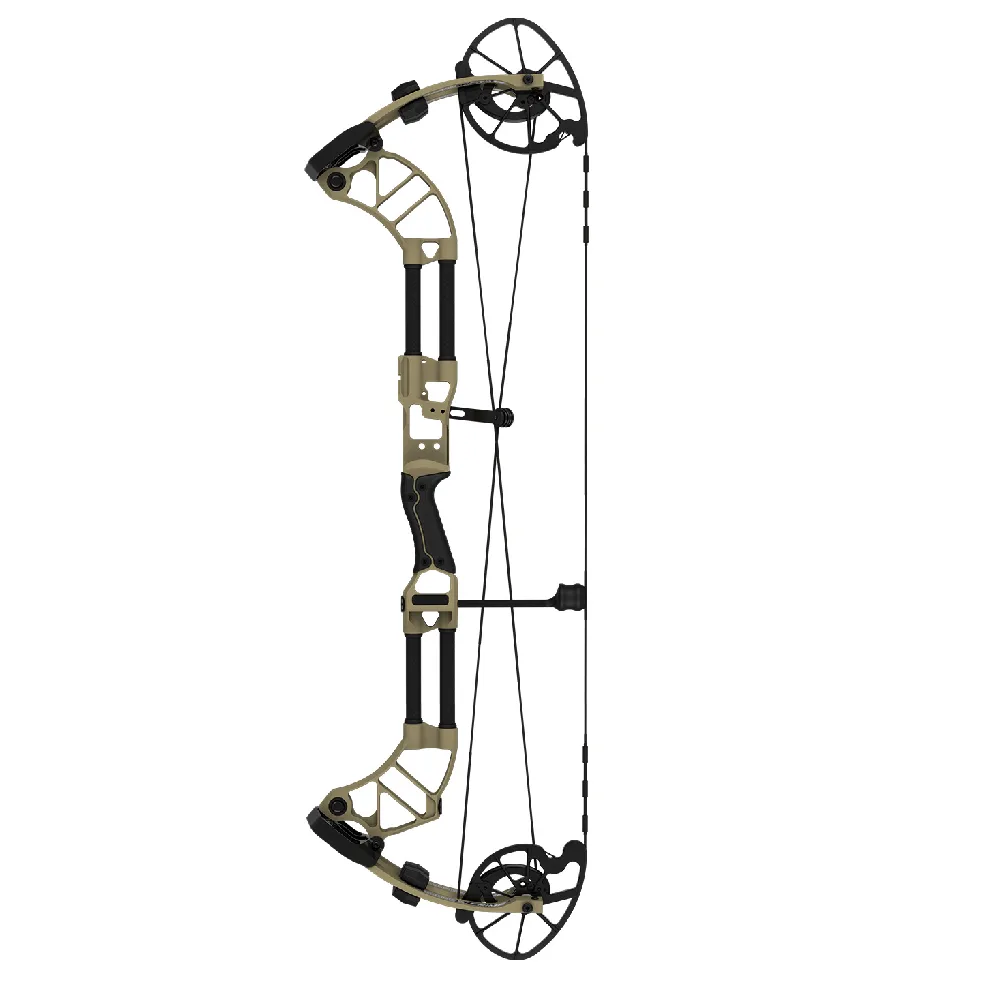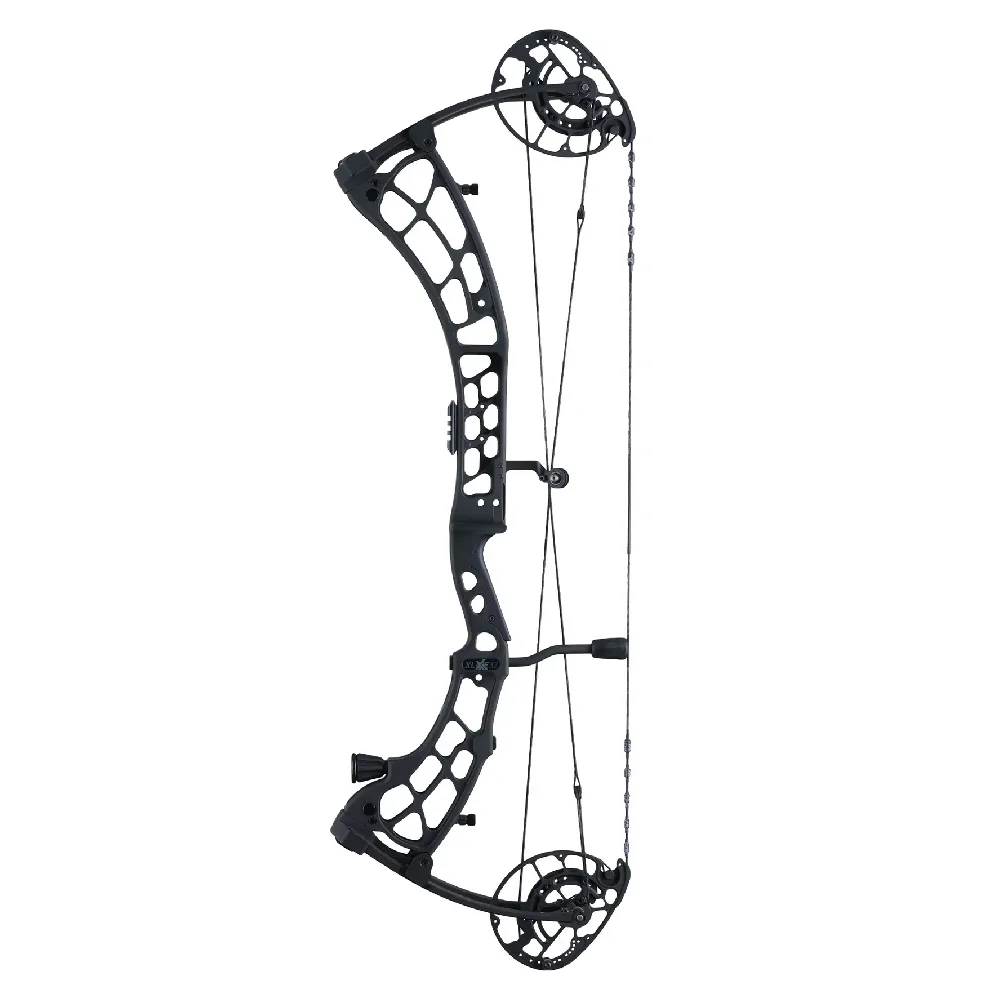We may earn revenue from the products available on this page and participate in affiliate programs. Learn more
As good as modern-day compound bows have become, they just keep getting better. The 2025 bow class is the best I've ever tested, and I've been testing bows for more than 20 years. From short- to long-axle-to-axle bow and from speed bows to smooth shooters, there's something for every bowhunter in this year's lineup. Some manufacturers returned to the drawing board, dreaming up all-new technologies, while others built on the success of previous lines without resting on their laurels.
As has been the case over the past F&S bow tests, picking a definitive winner proved difficult. Today's flagships all deliver solid accuracy, are generally quiet, plenty fast, and don't shock the hand. The truth is that the differences between first place and last place are minor. Still, there are definitive winners. So let's get to it.
Best Overall: PSE Mach 33 DS
Quietest: Hoyt RX-9 Ultra
Best Speed: Mathews Lift X 29.5
Best Draw Cycle: Bowtech Proven 34
Most Accurate: Prime Form
How We Test Compound Bows
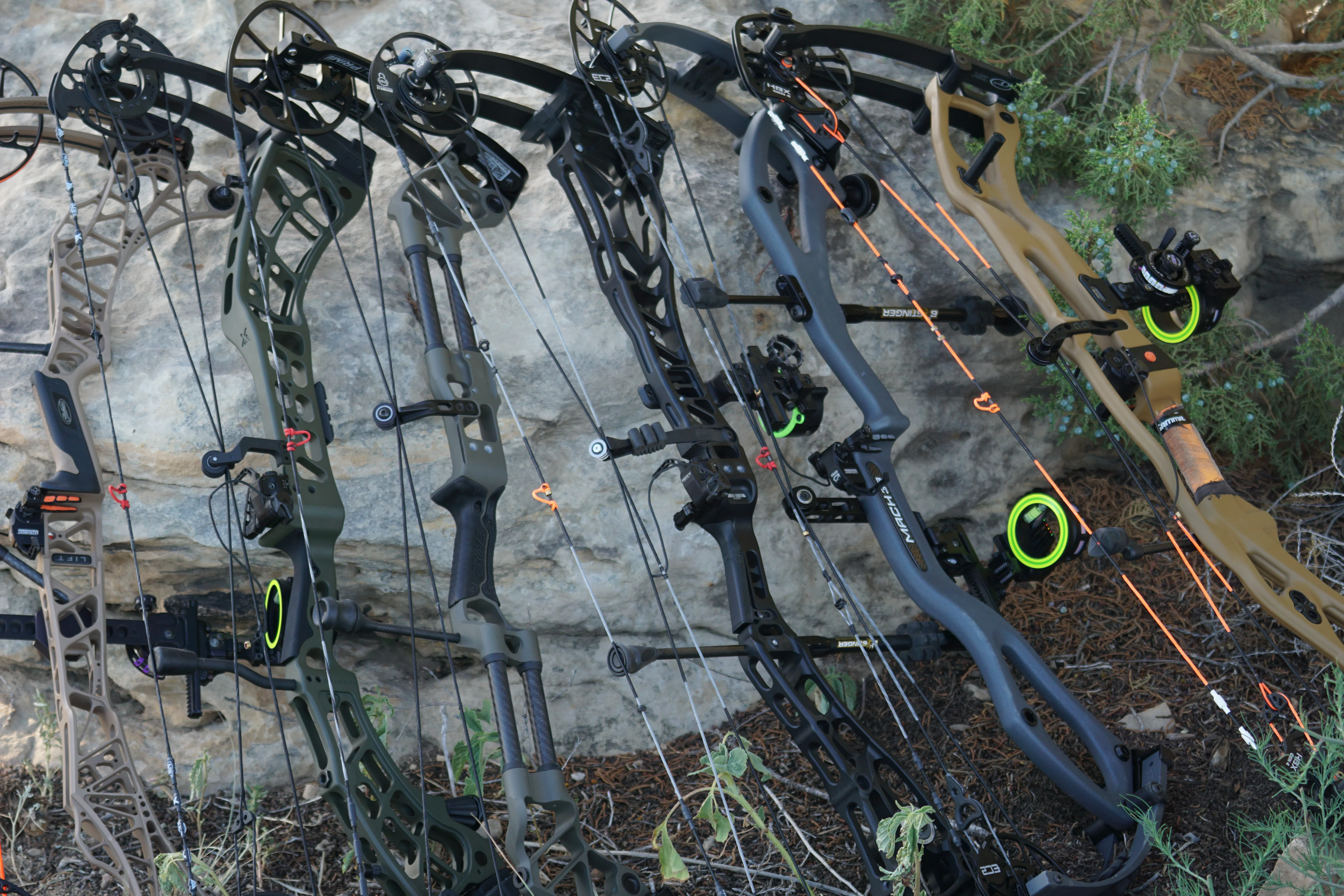
The 2025 bow test was, as in years past, an invitational. If you don't see your favorite bow builder represented, chances are they opted not to submit a bow for testing. As in years past, our 2025 bow testing goals were fairness and honesty. Compound bows are expensive, especially this year, with the priciest in the current lineup running $2,149 and the cheapest $1,449. Regardless of what brand you go with, it's a serious investment. We get that, and we want you to help you make the best choice for you, so we're not going to blow smoke. The review below is not sponsored content or a glorified press release. It's the result of rigorous testing and honest evaluations. While you can and should use this bow test as a guide, it's always best to visit your local pro shop and send arrows downrange with the compound bow model you're considering.
Best Compound Bow Test: Parameters and Set-Up

When I received the test bows, the first thing I did was adjust each one and confirm that all had a draw length of 29 inches and a draw weight as close to 70 pounds as possible. Then, I set up all the bows with the following accessories:
Spot-Hogg Boonie, Spot-Hogg Fast Eddie Triple Stack, and Black Gold CenterMass Pro Hunter sights
QAD HDX Integrate MX2 drop-away rests
3/16 G5 Meta Peep
D-loop
28-1/4-inch Easton 5.0 340-spine/100-grain field points/381.5-grain finished weight
Groups were shot with UltraView's The Hinge, UV Button thumb, and Carter's Too Simple thumb releases.
Best Compound Bows Test: Procedure and Scoring
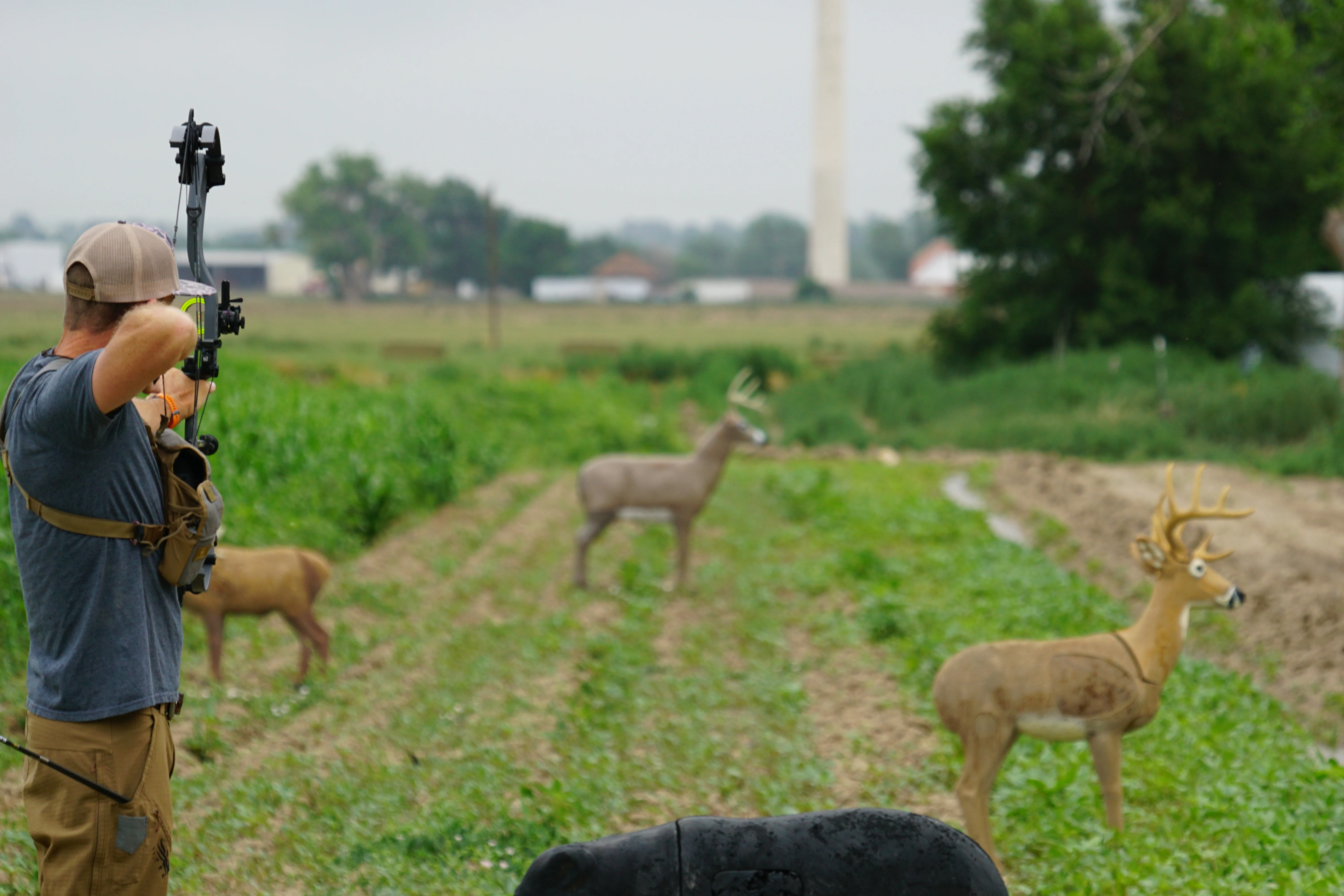
After verifying specs, I put 100 arrows through each bow at ranges between 20 and 40 yards to allow for string settling/stretch and so I could familiar with each before final accuracy testing. Meanwhile, I evaluated draw cycle, let-off, back wall, grip, balance, aiming, and fit and finish, as well as post-shot noise and vibration.
Next, I paper-tuned each bow, standing precisely 6 feet from the paper, tuning all six test arrows until each created a perfect bullet hole through the paper. Next, I shot three-arrow groups at 20 and 40 yards with field points. All accuracy testing happened at wind speeds of less than 4 mph, and the wind was always at my back or blowing straight into me. I measured and average all the group sizes for each bow.
After field-point testing, I shot 40 yard groups with both fixed-blade Exodus broadheads and SEVR 1.5 mechanical broadheads. I shot from both standing and kneeling positions, measured groups, and averaged them.
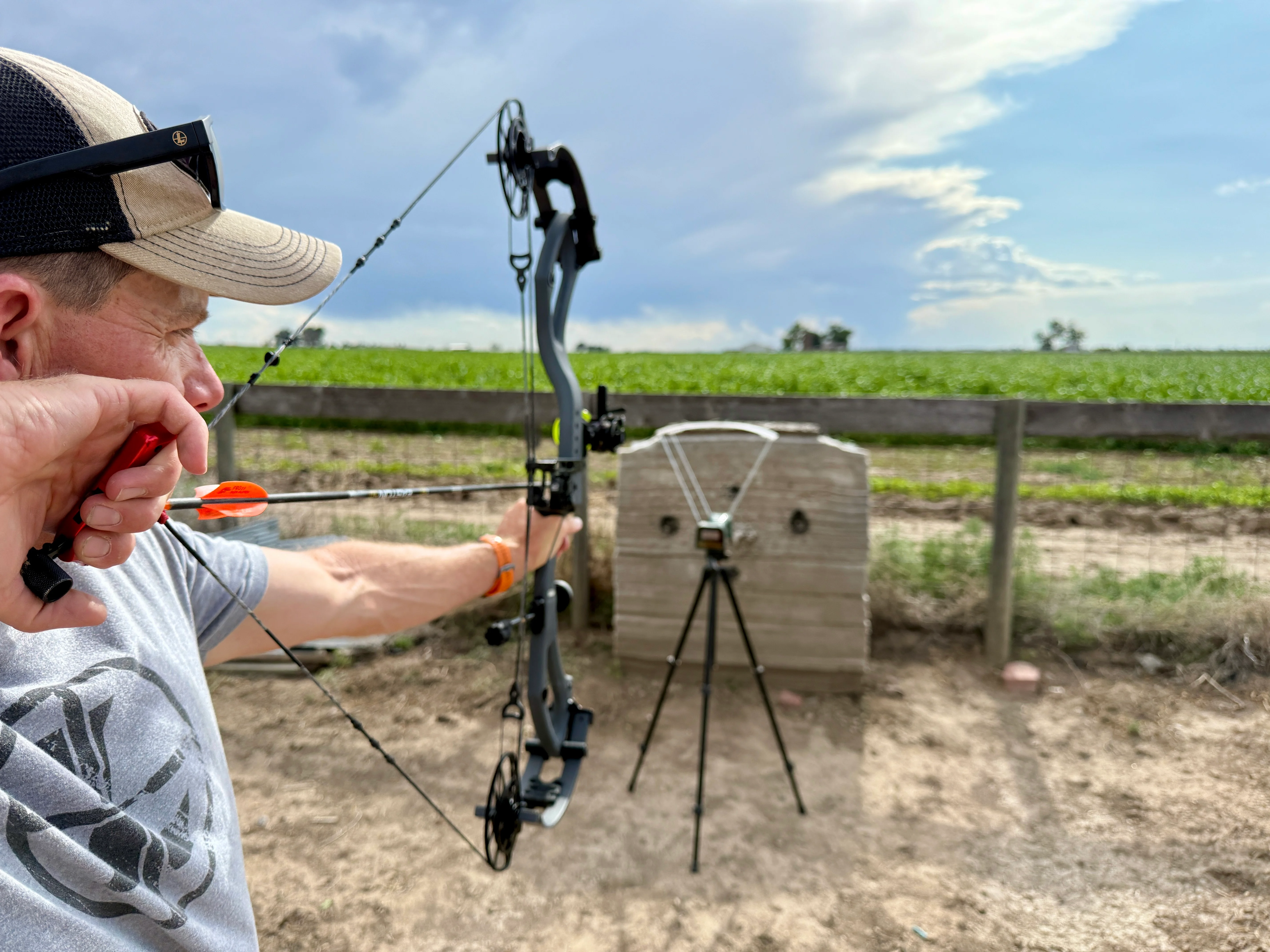
For the speed test, I took reading for three arrows with both Caldwell's Ballistic Chronograph and Garmin's Xero C1 Pro Chronograph. (Remember, these are IBO-spec speeds, but they are a perfect apples-to-apples comparison, with no fudging.) Finally, I did a noise test using Reed's Model R8050 Sound Level Meter and recorded the decibel (dB) readings. Once I had all the results, I scored all the bows on a 100-point scale in the following categories to determine the best compound bow of 2025.

Accuracy and forgiveness (20 points)
Speed (20 points)
Draw Cycle (10 points)
Balance, grip, aim (10 points)
Lack of Noise (10 points)
Lack of Vibration (10 points)
Fit and Finish (10 points)
Here are the results.
Best Overall: PSE Mach 33 DS
Specs
Axle-to-Axle Length: 33"
Brace Height: 6-3/8"
Weight: 3 lb., 9 oz.
Price: $1,899
Test Results
Speed: 309 fps
Final Score: 98
PSE has been a mystery to me over the years. One year, I'll shoot PSE's top bow and love it, and the next year, I'll have something close to the opposite reaction. So I'll admit that I was a little surprised when I tallied up all the test scores and PSE's Mach 33 DS came out on top. But when I thought about how much I liked virtually every aspect of this bow during my testing, it made perfect sense. The draw cycle is smooth and balanced. It sits well in the hand at full draw. It's accurate, fast, and quiet. It's all that and a bag of chips—and that's why its our winner for the best overall bow of 2025.
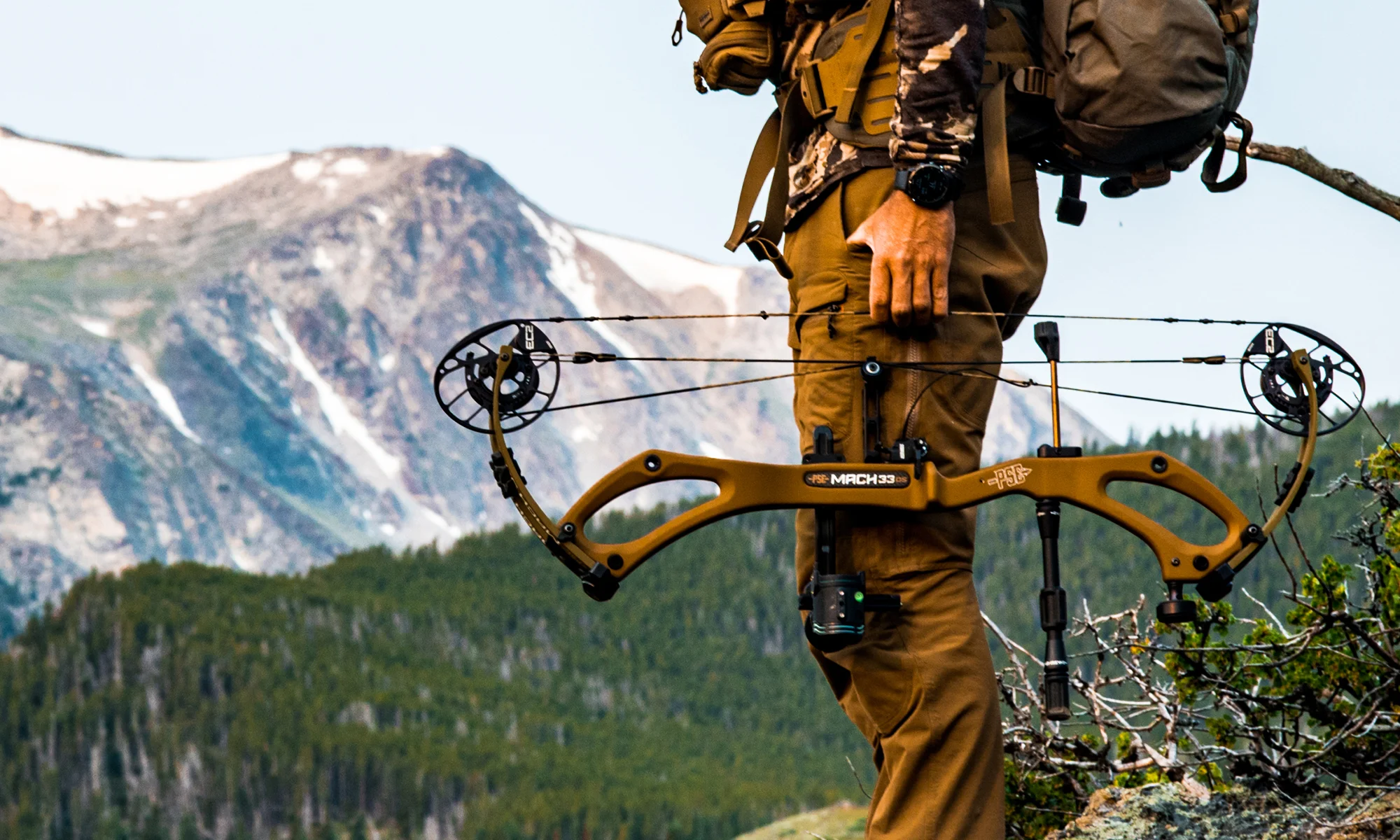
There were four bows in this year's test that measured from 33 to 34-inches axle-to-axle. The PSE, with its carbon riser, was the lightest in the group, and I love the direct-to-riser grip, which reduces shooter-induced torque and promotes excellent feel. Bowtech's Proven 34 was the only bow to beat it in the draw cycle category. The Mach 33 DS tied with the Hoyt RX-9 Ultra and Mathews Lift X 29.5 as the second most accurate bow, and at 309 fps, was the second-fastest bow. Bottom line: The Mach 33 DS checks all the boxes.
One feature I really liked and which helped the Mach 33 DS edge out the Hoyt RX-9 Ultra for Best Overall is the EZ.220 Snap Spacer System. Several bows in this year's test group (Mathews, PSE, Bowtech) allow for no-bow-press tuning. PSE uses what they call Snap Spacers, which feature a tail that sticks off the spacer. Using a Snap Spacer Took included in the Snap Spacer System Kit, you just grab the tail and swap out spacers in seconds. This feature simplifies tuning the Mach 33 DS, and I had zero durability issues with the spacers.
About the only negative I can say about the Mach 33 DS is that it ain't cheap—not by a long shot. But nothing's cheap these days and it's not way out of line for a carbon-riser bow. Plus, it's the bow of the year, and if you get a chance, you need to sending some arrows downrange with this must-shoot compound.
Quietest: Hoyt RX-9 Ultra
Specs
Axle-to-Axle Length: 33-1/2"
Brace Height: 6-3/8"
Weight: 4.3 lb.
Price: $2,149
Testing Results
Speed: 308 fps
Final Score: 97
Hoyt's new RX-9 Ultra is designed to be an upgrade to the excellent RX-8 Ultra, and it is in many ways. This new flagship is faster and more accurate than last year's, though not quite as smooth-drawing. Hoyt gained speed and efficiency by switching to a five-module system that optimizes every inch of draw length. Using various arrows in differing grain weights, I've seen fps gains up to 12 fps over the RX-8 Ultra. Hoyt also wanted to size down from the RX-8 Ultra. Based on consumer feedback, they brought the axle-to-axle length down to 33-1/2-inch to promote balance and maneuverability.
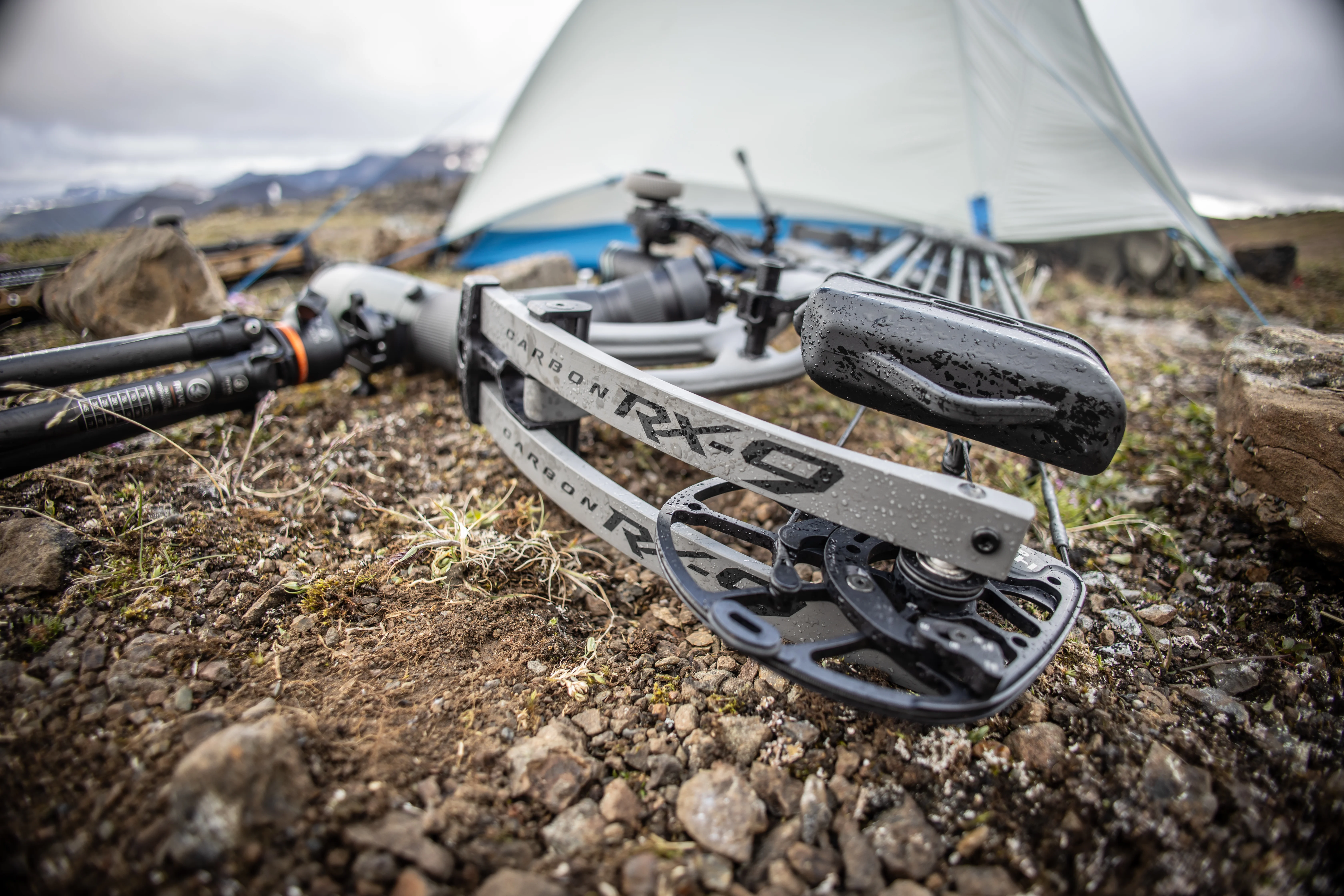
The draw cycle and lack of on-the-cam tuning are what dropped the the RX-9 from gold to silver. The first two or three inches of the draw cycle is where you feel the most weight. The draw gets smoother after that, and the transition to the bow's 80 percent let-off is decent. At full draw, the bow's natural point of aim is excellent. The RX-9 Ultra proved exceptionally accurate from 20 to 40 yards with field points as well as fixed and mechanical broadheads. The bow won the broadhead accuracy test from 40 yards, putting three Easton 5.0 arrows inside a 2-inch dot. To the tested distance of 40 yards, no sight/rest adjustment was needed to ensure fixed-blade heads hit with the field points. Overall, it tied for second with the Lift X 29.5 and Mach 33 DS for accuracy.
Noise and hand vibration are incredibly minimal. The RX-9 Ultra was the quietest bow in the test, producing a three-shot average dB reading of 63.1, which is exceptionally quiet with a lighter 381.5-grain test arrow. Most of the credit goes to the HBX Gen 4 cam. The cam offers draw-length adjustment in 1/4-inch increments and lets the archer choose between backwall settings of Hard and Xtra Hard, and let-offs of 75, 80, and 85 percent.
The RX-9 Ultra was third in speed behind the Mathews Lift X 29.5 and PSE Mach 33 DS. Overall, you can't go wrong with Hoyt's RX-9 Ultra. The bow is light, accurate, fast, remarkably quiet, and dead in the hand. It is the most expensive compound bow in this year's review, but also one of the best—and a whisker away from the top slot
Related: Check out a full review of the RX-9 Ultra here.
Best Speed: Mathews Lift X 29.5
Specs
Axle-to-Axle Length: 29.5"
Brace Height: 6"
Weight: 3.99 lb
Price: $1,359
Testing Results
Speed: 311 fps
Final Score: 96
Would you have ever guessed that the least expensive flagship bow of the year comes from Mathews? Me either, but here it is. The Lift X is also the shortest axle-to-axle compound bow in this year's review, one one of the lightest despite its aluminum riser. Mathews went the extra mile to carve weight from the bow. Yes, it has a shorter riser and less space between the axle pins, but at under 4 pounds, it has a carbon-riser feel to it, without the carbon-riser price tag. If the Lift X were not already winning Best Speed Bow, we'd give it Best Value.
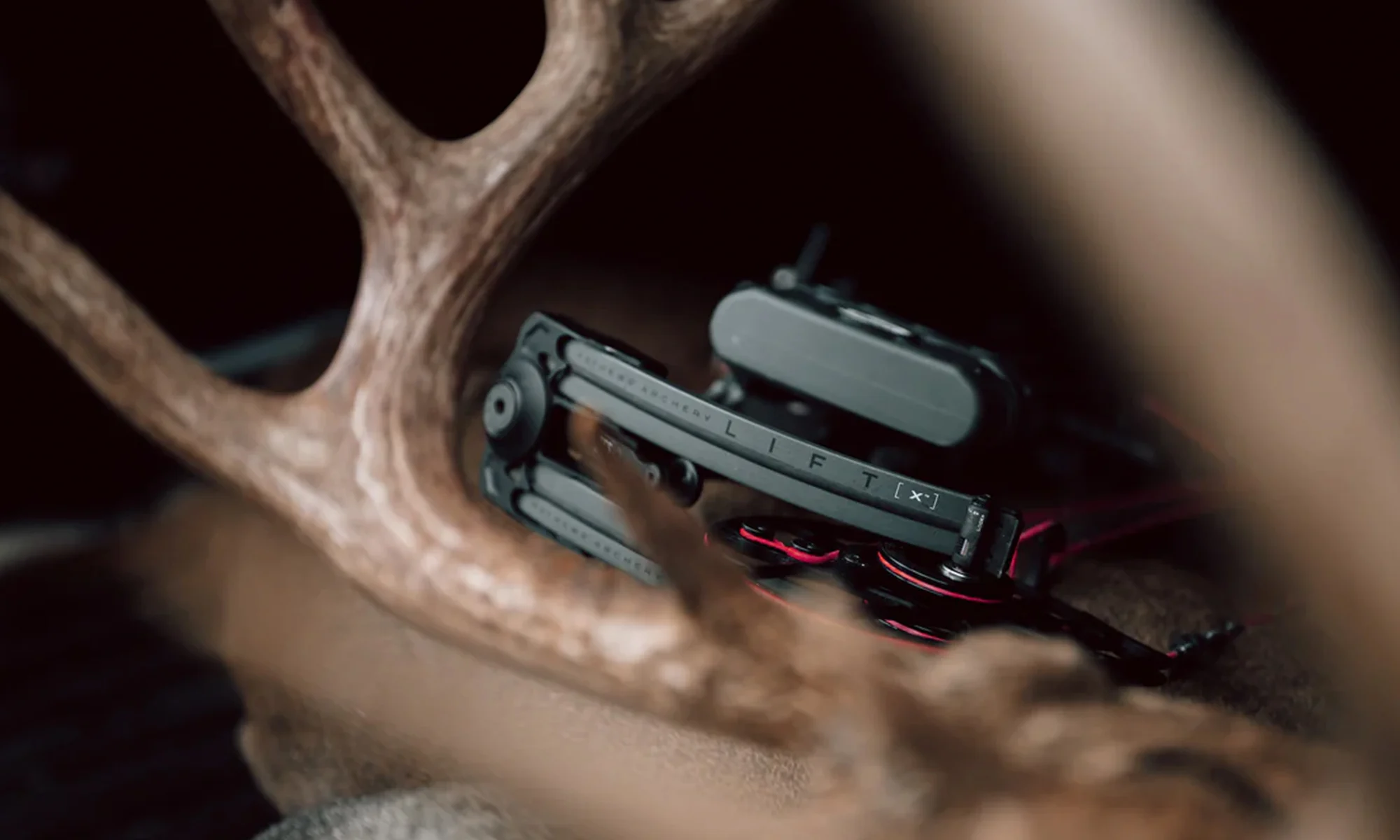
The Lift X 29.5 has oversized SwitchWeight X module-specific cams. Limb chatter was zero—the limb bolts turn without a bit of slop. The bow pressed easily, and I appreciate Mathews' effort to make tuning easier than ever. Patented Limb ShiftTM Technology allows for the removal of a pair of set screws to access a twist-and-turn system that lets you tune out left/right tears by micro-adjusting the limb channel. It works great, and the bow tuned up easily.
The new Bond grip was my favorite of all the bows tested. It promotes positive hand contact without inducing torque. The draw cycle is a tad stiff throughout. However, let-off isn't abrupt. At full draw, the cams want to go, but as long as I stayed strong in the front and firm in the back—pulling hard into the bow's inner cable—I could anchor up, aim, and execute. If you suffer from target panic, the Lift X 29.5 isn't the bow for you. Mathews built the bow for speed and accuracy. At 311 fps, it is the fastest bow in this year's review. While the cams aren't overly aggressive, the valley isn't ultra-forgiving. Creep forward with your draw arm, and the cams will pull you into the shot.
The Lift X 29.5 got the bronze for quietness. I also noticed that for a shorter bow with a 6-inch brace height, the Lift X 29.5 was generally forgiving. Fixed-blade broadheads grouped exceptionally well from 20 and 40 yards and hit less than 1/4-inch from my field point and mechanical groups from these distances. The Mathews tied with Hoyt's RX-9 Ultra and PSE's Mach 33 DS for second place in overall accuracy. The top-mounted axle system maximizes the limb's working surface while reducing bow weight and increasing overall platform stability.
The light weight and maneuverability came into play on the 3-D range. The bow is a breeze to tote, and for kicks, I shot it standing, kneeling, and flat on my butt. I also drew in tight spaces, requiring crouching before settling my pin and executing. If you do your job, this bow will do its. The more I shot the bow, the more comfortable I got with it. I got used to the ready-to-fire cams and shot my best-ever 3-D score with the Lift X 29.5 through 24 targets between 36 and 60 yards.
Related: Check out a full review of the Lift X 29.5 here.
Best Draw Cycle: Bowtech Proven 34
Specs
Axle-to-Axle Length: 34"
Brace Height: 6.625"
Weight: 4 lb., 7 oz.
Price: $1,449
Testing Results
Speed: 295 fps (tested in Comfort Mode)
Final Score: 95
I was glad to see Bowtech go long again in 2025. Last year's SS34 had the same axle-to-axle length as the Proven 34 and won the hearts of many bowhunters. The SS34 produced the best draw cycle in our 2024 review, and the Proven 34 retains the title. The Proven's draw cycle is remarkably smooth. Draw weight builds evenly from the front half to let-off, and the transition to let-off is so subtle that I was able to crawl into my anchor points quickly. Acquiring quick anchor points means rapid target acquisition. I shot the Proven 34 standing, kneeling, flat on my butt with my legs out, etc., and no matter my body position, the bow drew remarkably well.

Bowtech didn't create the Proven 34 to be fast. While 295 fps (for my specs) isn't slow, it was the second-slowest bow in this year's test group. It also finished second-to-last in post-shot noise. However, these shortcomings are trumped by the Proven 34's accuracy and tunability. Set in Comfort mode, the Proven 34 put field-tips and mechanical and fixed-blade broadheads on the money. Minus the post-shot thud and noticeable hand vibration, the bow is a joy to shoot because it is so accurate. I shot a 243/240 24 3-D-target score with fixed-blade broadheads in an 11-15 mph left-to-right wind, and the closest shot was 36 yards. I appreciate Bowtech's Grip Lock, which allows easy grip angle adjustment.
Bowtech bows setup easily and are a breeze to tune. The DeadLock Cam system allows you to quickly adjust cam lean anywhere, anytime, by loosening a single set screw and then turning the "Tune" hex slot left or right. Timing adjustments are equally as easy. TimeLock uses timing dots, and a TimeLock Lock locking screw located inside a protected slot. Twist and turn to shore up any timing issues.
Overall, Bowtech's Proven 34 will make a great field bow. It was the heaviest compound bow in this year's class, but if you don't mind a little post-shot noise and hand tickle, this bow will do its job on the range and in the field.
Most Accurate: Prime Form
Specs
Axle-to-Axle Length: 34"
Brace Height: 6-1/4"
Weight: 4 lb., 1 oz.
Price: $1,595
Testing Results
Speed: 296 fps
Final Score: 94
Debuting the industry's first hybrid riser, Prime's new Form combines aluminum and carbon to create a long, stiff, and lightweight riser. The design catches the eye. Prime calls it Advanced Structures Technology (AST) and claims increased riser stiffness of 47.5 percent and a reduction in overall bow weight. I was impressed with the weight. For a longer axle-to-axle bow, the Form felt light. The Core Camy System is module-specific to maximize efficiency at every draw length, and the two-piece grip feels decent in the hand.
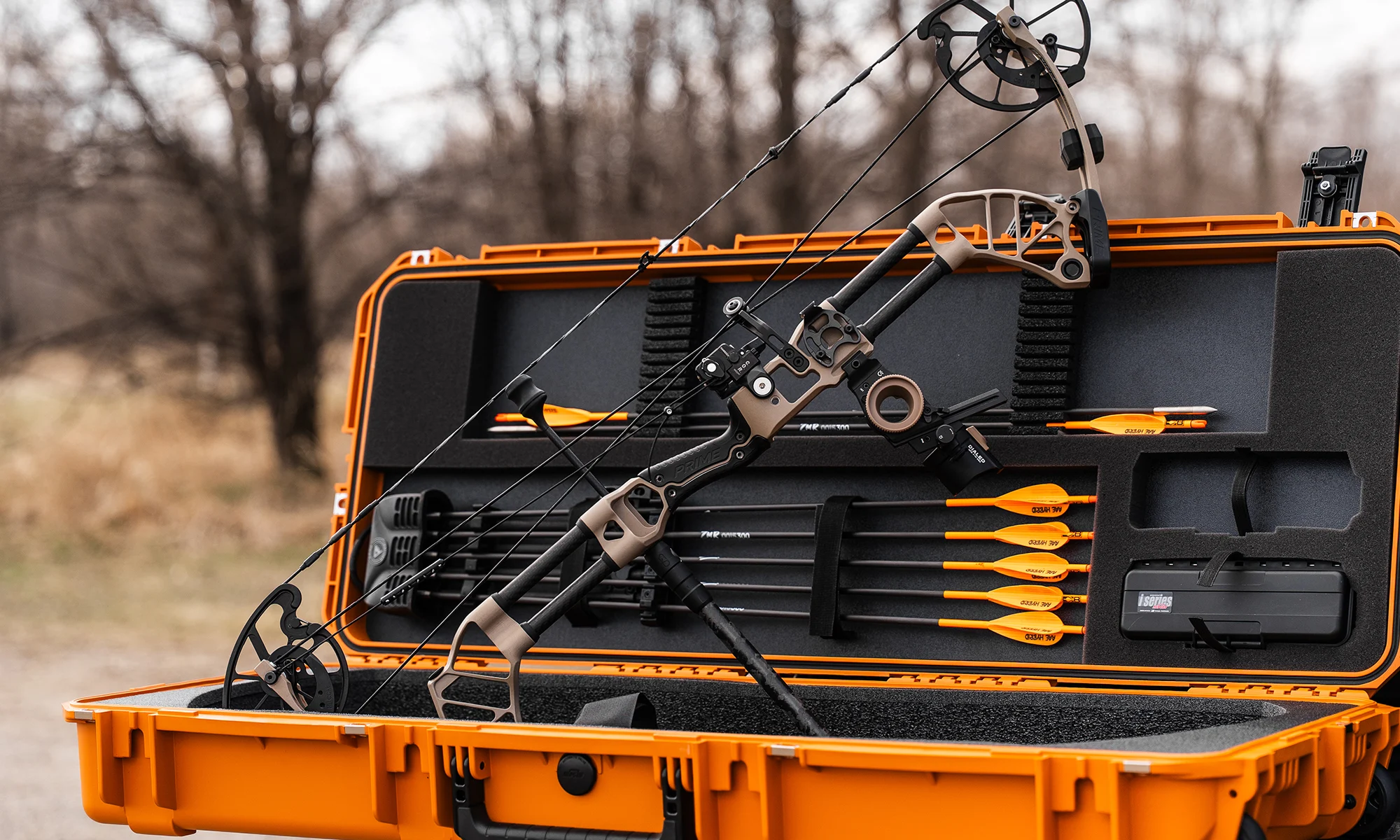
What really made the Form stand out, though, was its ability to stack arrows. The most accurate bow in this year's test, the Form produced sub-1-1/2-inch groups from 40 yards with field points and mechanical broadheads. Fixed-blade broadhead accuracy was also solid. At 40 yards, the fixed-blad groups widened a bit, but if I did my job and executed, these were always inside a 2-1/2-dot. Centergrip technology positions the grip in the center of the bow, so more mass is shifted below the grip, and this technology works with a hybrid riser to minimize pin float and help build shooting confidence. Bottom line: The Prime Form is one of the most accurate bows I have ever tested.
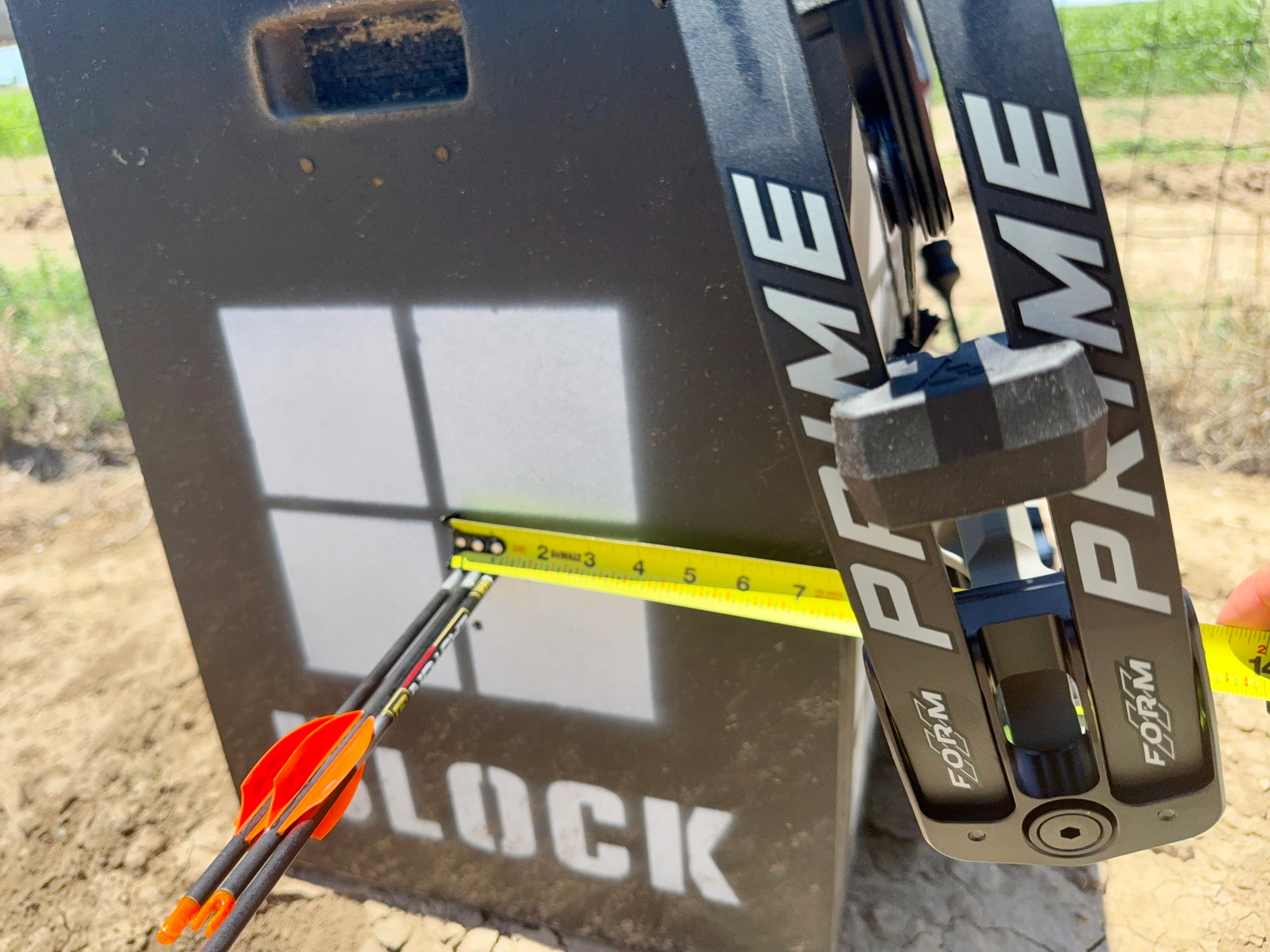
From kneeling to standing to flat-on-my butt, the Prime stacked arrows in 10 and 12 rings on 3-D targets between 20 and 40 yards. My biggest knock on the bow is the post-shot noise and hand vibration; it's too much. The loudest bows in this year's test, the Prime regularly produced post-shot decibel readings of 72.1. The hand shock was considerable, especially for a bow shooting a 381.5-grain arrow at 296 feet per second. Still, you can't take away from the fact that the compound is hyper-accurate, is easy to tune, and allows for modern-day accessories that don't utilize a mounting bar.
The Prime had the third-best draw-cycle score. The transition to let-off kept the bow from climbing further up the podium. It's abrupt, which creates a longer target acquisition time and can matter in a bowhunting situation. That said, you could make the argument that nothing is more important than accuracy, and the Form delivers there. Prime offers performance mods, but I opted to test the bow with the standard modules on it. Swapping mods is easy. Pull a pair of hex-head screws and make the switch.
Xpedition XLite 32
Specs
Axle-to-Axle Length: 32"
Brace Height: 6.5"
Weight: 3 lb. 12 oz.
Price: $1,849.99
Testing Results
Speed: 301
Final Score: 93
The newest member of Xpedition's XLite Series, the XLite 32 is a lightweight, smooth-shooting compound. The big story with the bow is the Magnite riser, which Xpedition notes is 33 percent stronger than aluminum and more durable than carbon. The bow is exceptionally light, at well under 4 pounds, and yest it's not tipsy and aims well. Although the 19-degree inlaid grip takes some getting used to, I tested the bow with the 17-degree grip (included) and preferred the 19-degree grip.
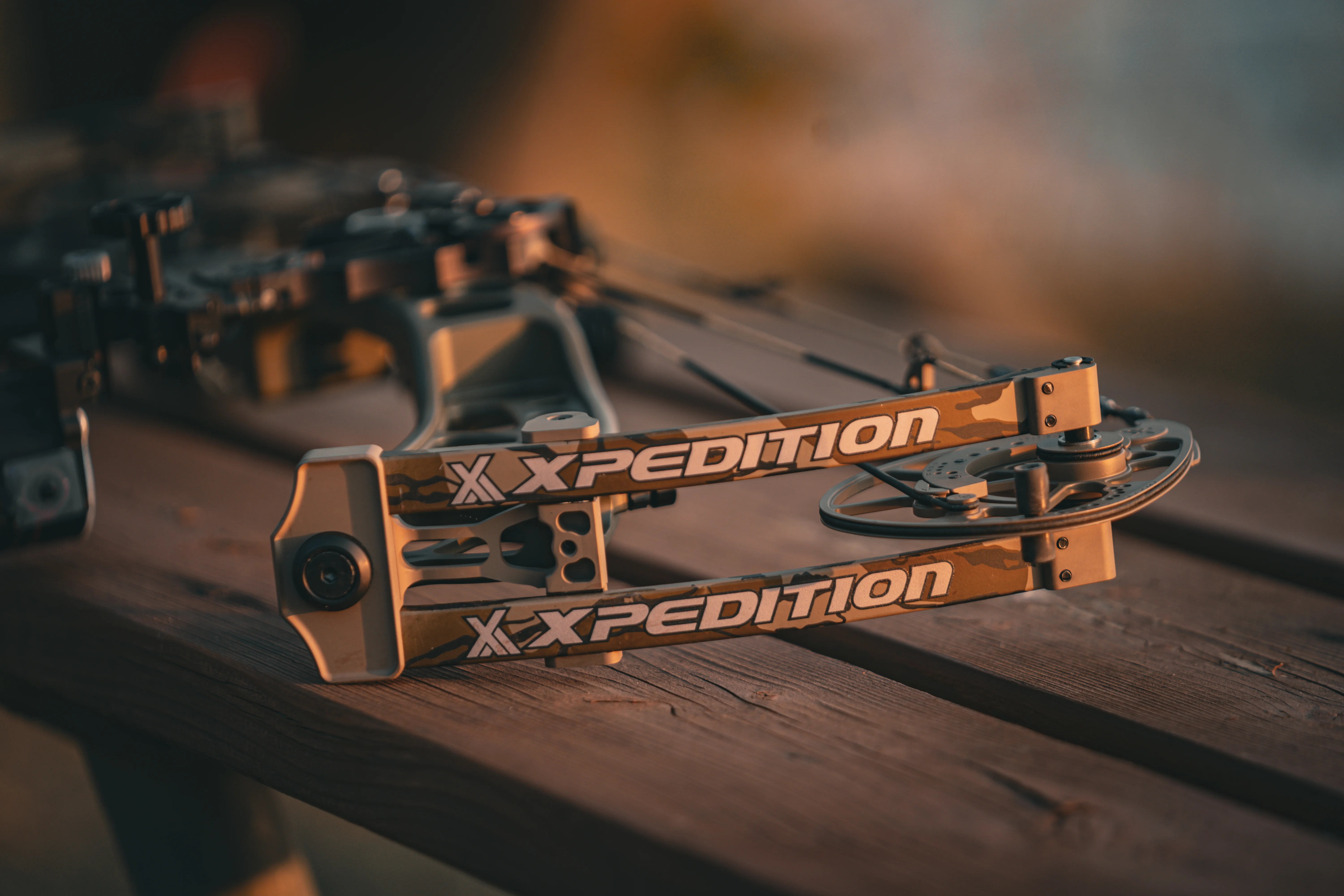
The bow was a touch heavy in the draw-weight department, and while achieving a 70-pound draw weight wasn't problematic, the limb's bolt chattered when turned. Besides that, the setup was straightforward, and the Xlite 32 produced immediate accuracy before a final paper tune. Draw weight builds evenly throughout the cycle, and the transition to the 80 percent let-off (adjustable) is not abrupt. The XB32 Cams aren't itching to pull you into the shot. I could pull into the bow's valley, aim, and execute.
The bow aims and shoots well. Even before paper tuning, I was pounding dots and spots on foam and bag targets and dotting 10- and 12-rings on 3-D targets from distances between 20 and 40 yards. The bow did well with field points and broadheads, mechanical and fixed. After final tuning, which required only a few .0019-inch rest windage clicks, mechanical heads hit with field points to the maximum tested distance of 40 yards. Fixed-blade broadheads hit 1/4-inch right of my field points at 20 yards and 1/2-inch at 40 yards.
This bow was a joy to shoot. It produced consistent accuracy, and though I did detect some post-shot hand tickles, they weren't distracting. The speed (301 fps) was respectable among its 2025 classmates; however, the bow was a touch on the louder side. Post-shot noise via the sound meter was 70.8 dB. The XLite 32 was the third loudest bow in this year's test.
My only issues with the bow were its grip, lack of on-the-cam/limb tunability, and post-shot noise. But The XLite 32 makes an excellent sit-and-wait or spot-and-stalk bow. It's light, shoots well, and is easy to set up and tune.
Why Trust Us
For more than 125 years, Field & Stream has been providing readers with honest and authentic coverage of outdoor gear. Our writers and editors eat, sleep, and breathe the outdoors, and that passion comes through in our product reviews. You can count on F&S to keep you up to date on the best new gear. And when we write about a product—whether it’s a bass lure or a backpack—we cover the good and the bad, so you know exactly what to expect before you decide to make a purchase.

